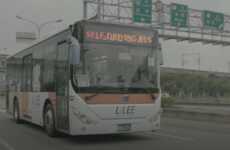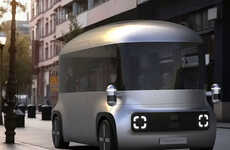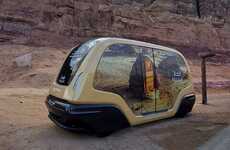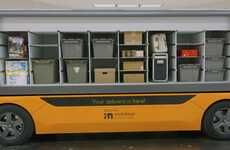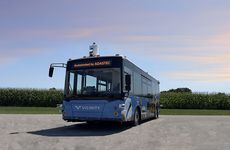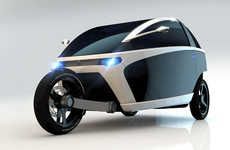
The Self-Driving WEpod Vehicles are on Public Roads in the Netherlands
Alyson Wyers — January 30, 2016 — Autos
This Dutch driverless shuttle is the first of its kind to actually hit the open road.
On January 28th, the WEpod self-driving vehicle entered into a test phase where it will be navigating around the Wageningen University campus. Earlier this week, the electronic bus took its first passengers down a few hundred meters of a rural route in the Netherlands. There is hope to expand to a fleet of WEpod vehicles operating in the area.
The driverless shuttle is the first to be on public roads for an extended period of time, where as the Ultra Pods at Heathrow were on closed routes for a limited time and won't be tested on the streets of London until later this year.
On January 28th, the WEpod self-driving vehicle entered into a test phase where it will be navigating around the Wageningen University campus. Earlier this week, the electronic bus took its first passengers down a few hundred meters of a rural route in the Netherlands. There is hope to expand to a fleet of WEpod vehicles operating in the area.
The driverless shuttle is the first to be on public roads for an extended period of time, where as the Ultra Pods at Heathrow were on closed routes for a limited time and won't be tested on the streets of London until later this year.
Trend Themes
1. Public Driverless Shuttles - The use of public driverless shuttles is a growing trend in transportation, opening up opportunities for autonomous public transportation networks.
2. Campus-based Self-driving Vehicles - The use of driverless vehicles on university campuses could provide an opportunity for companies to develop innovative campus transportation solutions.
3. Expansion of Driverless Vehicle Fleets - The expansion of driverless vehicle fleets in local areas will require supporting infrastructure, creating opportunities in industries such as construction and manufacturing.
Industry Implications
1. Transportation - Driverless shuttles in public transportation networks will require development in the transportation industry to ensure safe and efficient vehicle operation.
2. Higher Education - The use of self-driving vehicles on university campuses presents an opportunity for innovation in higher education transportation and campus mobility.
3. Infrastructure - The expansion of driverless vehicle fleets in local areas will require supporting infrastructure, creating opportunities in industries such as construction and manufacturing.
1.2
Score
Popularity
Activity
Freshness



